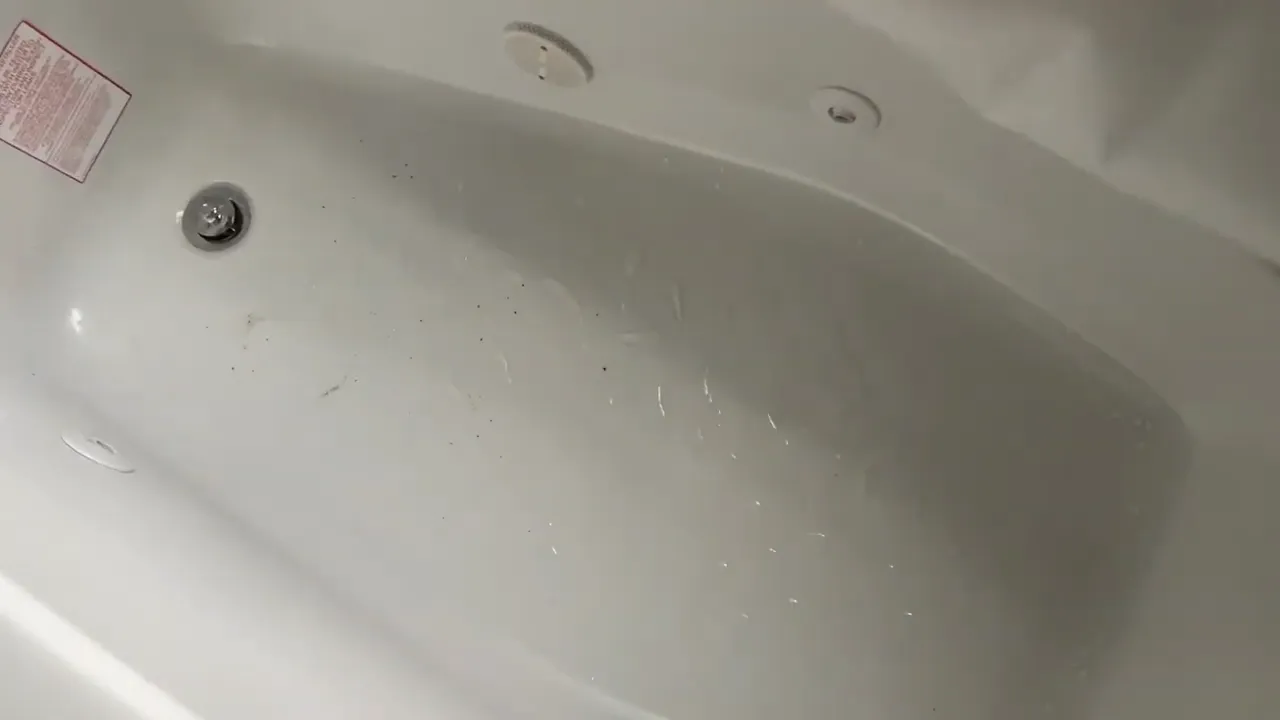To install a Jacuzzi bathtub, first, prepare the area and ensure proper plumbing connections. Then, position the bathtub carefully and connect the drain and water supply lines.
Choosing The Right Location For Your Jacuzzi Bathtub
When it comes to installing a Jacuzzi bathtub in your bathroom, one of the most important decisions you’ll need to make is choosing the right location. The placement of your Jacuzzi tub not only affects the aesthetics of your bathroom but also its functionality and convenience. In this section, we’ll explore the key factors to consider when evaluating the available space, plumbing requirements, assessing electrical needs, and ensuring proper ventilation for your Jacuzzi bathtub.
Evaluating available space in your bathroom:
Before installing your Jacuzzi bathtub, it’s crucial to evaluate the available space in your bathroom. A spacious bathroom can accommodate a larger tub, while a smaller bathroom might require a compact model. Take precise measurements of the area where you plan to install the tub, ensuring there is ample room for both the tub itself and the required surrounding space for ease of access and maintenance.
Considering plumbing requirements:
Proper plumbing is essential for the smooth operation of your Jacuzzi bathtub. When choosing a location, consider the proximity to existing plumbing lines. It’s best to install the tub near the main drain, supply lines, and overflow outlets to minimize the need for extensive plumbing modifications. If necessary, consult a professional plumber to ensure that your bathroom’s plumbing infrastructure can support the installation of a Jacuzzi tub.
Assessing electrical needs for the tub:
A Jacuzzi bathtub typically requires an electrical power source for its various features, such as jets, lights, and heating elements. Before choosing a location, assess the availability of electrical outlets in the vicinity. Ensure that the chosen location can accommodate the necessary electrical connections without compromising safety or violating local electrical codes. If needed, consult an electrician to create suitable electrical infrastructure for your Jacuzzi tub.
Ensuring proper ventilation:
Proper ventilation is crucial to prevent the buildup of moisture, mold, and mildew in your bathroom. When determining the location for your Jacuzzi bathtub, consider the existing ventilation system and ensure that it is adequate to handle the increased humidity generated by the tub. If necessary, install exhaust fans or seek professional advice to improve the ventilation in the chosen area.
By carefully evaluating the available space, considering plumbing requirements, assessing electrical needs, and ensuring proper ventilation, you can choose the ideal location for your Jacuzzi bathtub. Taking these factors into account will not only optimize the functionality and convenience of your tub but also enhance your overall bathing experience. Next, let’s move on to the installation process itself.
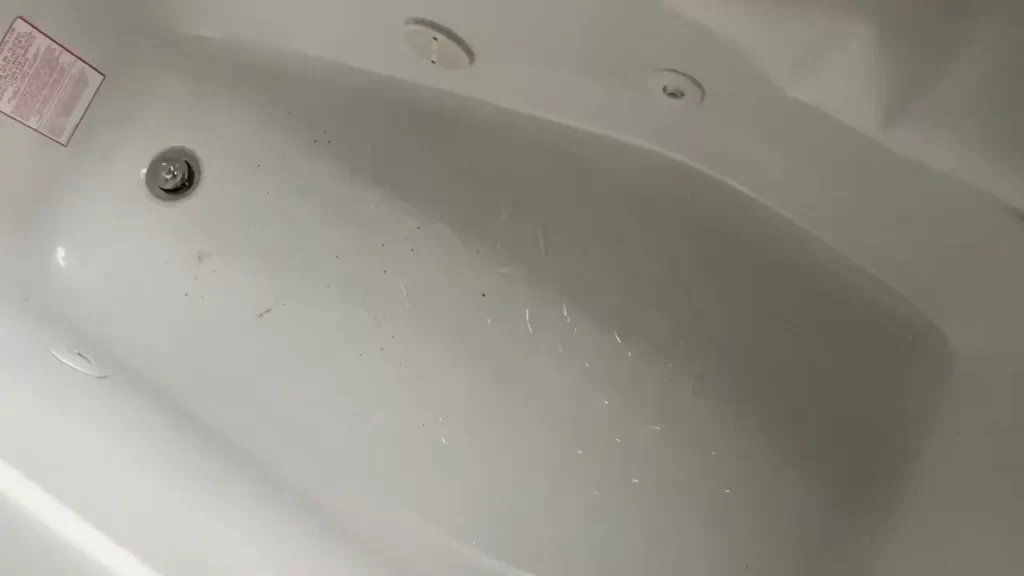
Gathering The Necessary Tools And Materials
Gathering the Necessary Tools and Materials is the first crucial step in successfully installing a Jacuzzi bathtub. With the right tools and materials at hand, you can ensure a smooth and efficient installation process. In this section, we will discuss the essential tools required, the materials you need to gather, and provide some useful tips for purchasing the right bathtub model that fits your requirements.
Listing essential tools for installation
- Adjustable wrench: This tool is essential for tightening and loosening various plumbing connections.
- Hacksaw: You may need to cut through pipes or other materials during the installation, and a hacksaw will come in handy.
- Plumbers tape: This tape helps create watertight seals by preventing leaks in the plumbing connections.
- Multipurpose screwdriver: A multipurpose screwdriver will be needed to tighten or remove screws during the installation.
- Pipe wrench: This tool is mainly used for gripping and turning pipes, making it essential for any plumbing job.
- Level: Ensuring that your Jacuzzi bathtub is installed evenly is crucial. A level will help you achieve proper alignment.
- Measuring tape: Accurate measurements are essential to ensure that the bathtub fits your desired space.
- Electric drill: An electric drill is necessary for creating holes and attaching various components.
- Caulking gun: A caulking gun is necessary for applying sealant around the edges of the bathtub to prevent water leakage.
- Safety gear: Don’t forget to equip yourself with gloves, safety goggles, and a dust mask to protect yourself during the installation process.
Identifying required materials
- Jacuzzi bathtub: Choose a bathtub model that suits your needs, preferences, and bathroom space. Consider factors such as size, depth, shape, and material.
- Plumbing fittings: You will need various fittings to connect the bathtub to the water supply system and drainage system. These include pipes, connectors, and valves.
- Waterproofing materials: Ensure you have an appropriate waterproof membrane, primer, and sealant to prevent water damage.
- Support structure: Depending on the bathtub model, you may need to build or reinforce the support structure to bear the weight of the tub.
- Electrical components: If your Jacuzzi bathtub has jets or other electrical features, make sure you have the necessary electrical components, including wiring and outlets.
Tips for purchasing the right bathtub model
- Measure your space: Before purchasing a Jacuzzi bathtub, carefully measure the available space in your bathroom to ensure it can accommodate the desired tub size.
- Consider your needs: Think about your specific requirements. Do you prefer a deep-soaking tub or one with whirlpool jets? Consider your bathing habits and any mobility limitations.
- Budget and quality: Determine your budget and balance it with the desired quality. Look for reputable brands that offer both durability and functionality.
- Material and maintenance: Choose a bathtub material that fits your style and maintenance preferences. Common options include acrylic, cast iron, and fiberglass.
- Read customer reviews: Research customer reviews of different bathtub models to gain insights into their performance, durability, and customer satisfaction.
- Consult a professional: If you are unsure about the right bathtub model for your bathroom, consider consulting a professional to provide expert advice.
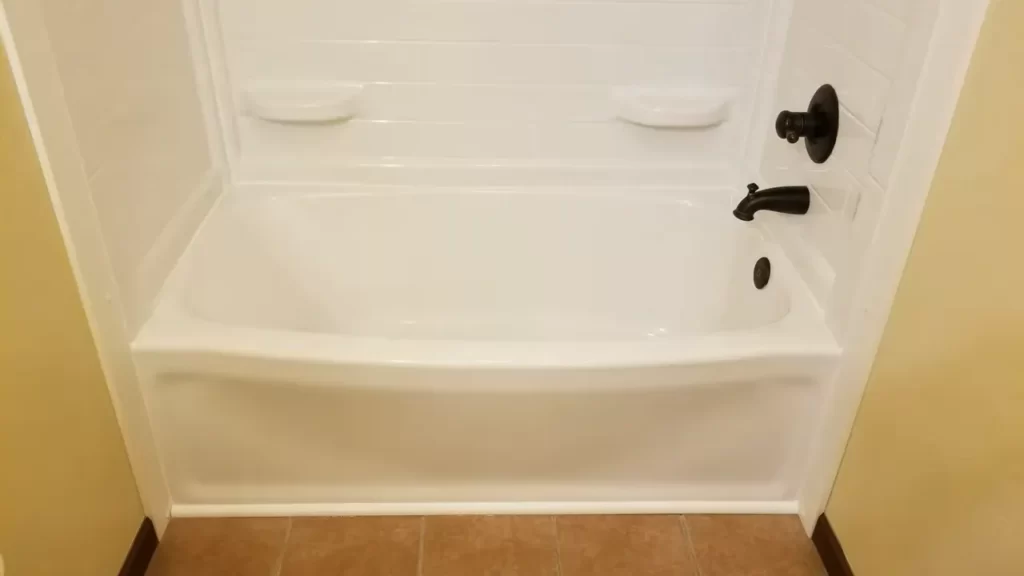
Preparing Your Bathroom For Installation
Making preparations before installing a jacuzzi bathtub is essential to ensure a smooth and successful installation process. This step-by-step guide will walk you through the necessary tasks to get your bathroom ready for your new luxurious addition.
Clearing out the area
Prior to any installation work, it is crucial to clear out the area where your jacuzzi bathtub will go. Remove any furniture, clutter, or obstructions that may hinder the installation process. This includes removing towels, bath mats, and any personal items that may be stored in the bathroom.
Making necessary repairs to the floor and walls
Inspect the floor and walls of your bathroom for any damages or repairs that need to be addressed before installing the jacuzzi bathtub. Ensure that the floor is level and free of any cracks or loose tiles. Repair any wall imperfections such as holes or uneven surfaces. This will provide a solid foundation for your jacuzzi bathtub installation.
Installing reinforcement if needed
In some cases, the weight of the jacuzzi bathtub may require additional reinforcement. If your bathroom floor is not strong enough to support the weight of the tub, installing additional supports may be necessary. Consult with a professional contractor or plumber to determine if reinforcement is required and to ensure it is done properly and safely.
Establishing a waterproof barrier
Creating a waterproof barrier is essential to prevent water damage and protect the integrity of your bathroom. Apply a waterproofing membrane on the floor and walls surrounding the installation area. This will ensure that any water that splashes or leaks from the jacuzzi bathtub will not seep into the underlying structure, preventing mold and other costly problems.
By following these steps and properly preparing your bathroom for the installation of a jacuzzi bathtub, you can ensure a smooth installation process and enjoy the comfort and relaxation it provides. Remember to always follow manufacturer instructions and seek professional help if needed.
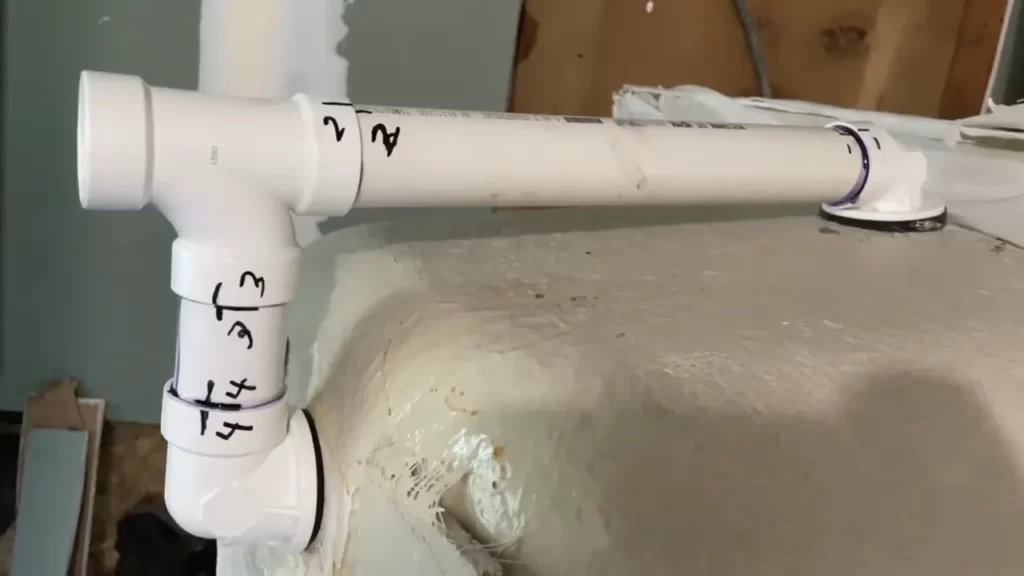
Preparing The Bathtub For Installation
Before you can enjoy a relaxing soak in your new Jacuzzi bathtub, you need to properly prepare it for installation. This crucial step ensures that your bathtub is in optimal condition and ready to provide the luxurious experience you deserve. In this section, we will discuss the essential tasks involved in preparing the bathtub for installation, including inspecting the tub for any defects, removing any packaging materials, and cleaning and leveling the bathtub.
Inspecting the tub for any defects
Before you proceed with the installation process, it is important to carefully inspect the Jacuzzi bathtub for any defects or damages. Start by visually examining the surface of the tub, checking for any scratches, chips, or cracks. If you come across any, make sure to address them before installation to avoid further damage and ensure the longevity of your bathtub.
In addition to inspecting the surface, carefully examine the drains, jets, and other components of the bathtub. Check for loose or missing parts, as well as any signs of leaking. It is essential to address any issues discovered during this inspection to prevent future problems and make your installation process smoother.
Removing any packaging materials
When unpacking your Jacuzzi bathtub, you may find it wrapped in various protective packaging materials. These materials include plastic covers, foam inserts, and cardboard boxes. It is crucial to remove all packaging materials before installation to avoid any obstructions or damage during the process.
Take your time to carefully unwrap the bathtub, ensuring that no remnants of packaging materials are left behind. Properly dispose of these materials to maintain a clean and safe working environment. Removing the packaging materials not only facilitates the installation process but also prepares your bathtub for its first use without any hindrances.
Cleaning and leveling the bathtub
Once the bathtub is free from defects and packaging materials, the next step is to clean and level it. Cleaning the bathtub ensures that there are no dirt, dust, or debris particles that could affect the performance or aesthetics of the tub. Use a mild cleaner and a soft cloth to gently wipe down the surface of the bathtub, ensuring it is completely clean and ready for installation.
After cleaning, you should also ensure that the bathtub is properly leveled. Uneven installation can lead to water pooling and other issues. Use a level tool to check if the bathtub is balanced. If adjustments are needed, use shims to level the bathtub, ensuring that it sits securely and evenly in its designated space.
In conclusion,
Preparing the bathtub for installation is a crucial step that sets the foundation for a successful and enjoyable Jacuzzi experience. By inspecting the tub for any defects, removing all packaging materials, and cleaning and leveling the bathtub, you can ensure that it is in perfect condition and ready to provide you with the utmost relaxation and comfort.
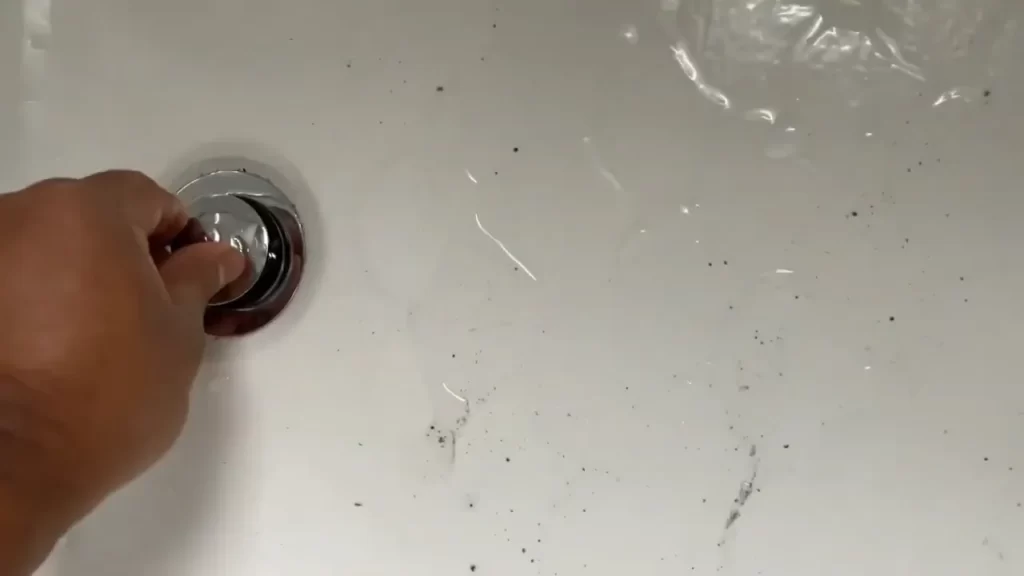
Connecting The Plumbing
Once you have successfully installed your Jacuzzi bathtub, the next step is to connect the plumbing. This crucial step involves hooking up the drain and overflow assembly, as well as installing the hot and cold water supply lines. Properly connecting the plumbing ensures that your Jacuzzi bathtub operates smoothly and efficiently.
Hooking up the drain and overflow assembly
The drain and overflow assembly is an essential component of your Jacuzzi bathtub, as it regulates the water flow and prevents overflow. Before connecting the drain and overflow assembly, make sure to read the instructions provided by the manufacturer, as specific installation requirements may vary.
To start, locate the access panel at the back of your Jacuzzi bathtub. Remove the access panel to gain access to the plumbing connections. Next, connect the overflow pipe to the overflow opening on the bathtub. Ensure that the gasket or rubber seal is securely in place to prevent leaks.
Once the overflow pipe is connected, proceed to connect the drain pipe. Apply plumber’s putty or silicone sealant to create a watertight seal. Insert the drain pipe into the drain opening and tighten the fittings using a wrench. Be careful not to overtighten, as this can damage the fittings.
Installing the hot and cold water supply lines
Properly installing the hot and cold water supply lines ensures that your Jacuzzi bathtub delivers optimal performance and temperature control. Before starting the installation, shut off the main water supply to avoid any potential accidents.
Locate the hot and cold water supply pipes near the location of your Jacuzzi bathtub. Use a pipe cutter to cut the pipes to the appropriate length for connection to the bathtub. Once the pipes are cut, insert a coupling or fitting into each end of the pipes, ensuring a secure fit.
Next, connect the hot and cold water supply lines to the corresponding fittings on the Jacuzzi bathtub. Tighten the fittings using a wrench, ensuring that they are secure but not overly tightened.
Testing for leaks
After connecting the drain and overflow assembly as well as the hot and cold water supply lines, it is vital to test for leaks. Even a small leak can lead to significant water damage if left unnoticed.
To test for leaks, turn on the main water supply and let the Jacuzzi bathtub fill with water. Inspect the connections for any signs of leakage. Additionally, check the drain and overflow assembly for any potential leaks.
If you notice any leaks, make sure to tighten the fittings or call a professional plumber for assistance. It is essential to address leaks promptly to prevent further damage and ensure the proper functioning of your Jacuzzi bathtub.
By following these steps and carefully connecting the plumbing, you can enjoy a relaxing and rejuvenating experience in your newly installed Jacuzzi bathtub.
Wiring The Jacuzzi Bathtub
Ensuring a dedicated GFCI circuit is available
Before starting the wiring process for your Jacuzzi bathtub, it’s crucial to ensure that a dedicated Ground Fault Circuit Interrupter (GFCI) circuit is available. This is a specialized circuit that is designed to protect you from electrical shocks in wet areas, such as bathrooms.
To check if you have a dedicated GFCI circuit, locate the circuit breaker panel in your house. Look for a breaker that is labeled specifically for the bathroom or bathtub area. This breaker should have a Test and Reset button on it. If you don’t have a dedicated GFCI circuit, it’s essential to have one installed by a qualified electrician.
Connecting the electrical components of the tub
Once you have confirmed the presence of a dedicated GFCI circuit, you can proceed with connecting the electrical components of the Jacuzzi bathtub.
Start by reading the manufacturer’s instructions carefully. This will provide you with the specific requirements for wiring your particular model of bathtub. Make sure to follow these instructions to ensure proper installation and to avoid any potential electrical hazards.
Next, turn off the power supply to the bathroom by switching off the corresponding circuit breaker. This will provide you with a safe working environment while you connect the electrical components of the tub.
If your Jacuzzi bathtub came with a pre-wired control pack, you will need to connect it to the GFCI circuit using an appropriate wire connector. Follow the color-coded labels on both the control pack and the circuit to ensure that the connections are made correctly.
If your bathtub requires additional wiring for features such as lights, air pumps, or heaters, you will need to refer to the manufacturer’s instructions for the specific wiring requirements. It’s crucial to make these connections accurately to avoid any electrical issues in the future.
Following safety guidelines for wiring
Wiring the Jacuzzi bathtub requires careful attention to safety guidelines to ensure the installation is done correctly and without any risks. Here are some essential safety tips to keep in mind:
- Always turn off the power supply before working on any electrical connections.
- Use appropriate wire connectors and follow the color-coded labels to make accurate connections.
- Avoid overloading the circuit by ensuring that the electrical components of the bathtub are compatible with the circuit’s capacity.
- Securely fasten all wires and ensure they are well-insulated to prevent any accidental contact with water.
- Double-check all connections before restoring power to the bathroom.
By following these safety guidelines, you can confidently wire your Jacuzzi bathtub, creating a relaxing oasis in your bathroom while ensuring the safety of yourself and your family.
Securing The Jacuzzi Bathtub In Place
Securing your Jacuzzi bathtub in place is an essential step to ensure stability and a long-lasting installation. By following these simple guidelines, you can ensure that your Jacuzzi bathtub remains firmly in place, providing you with a luxurious and relaxing experience for years to come.
Placing the bathtub in its final position
Before securing the Jacuzzi bathtub in place, it should be properly positioned in its final location. Carefully measure and mark the area where the bathtub will be placed, ensuring there is enough space for easy access and installation. Once you have determined the perfect spot, place the bathtub in its designated area, making sure it is level and centered.
Adjusting the leveling feet
Most Jacuzzi bathtubs come equipped with leveling feet, allowing you to adjust the height and ensure a stable installation. To adjust the leveling feet, start by inserting a screwdriver into the designated slots located underneath the bathtub. Rotate the screwdriver to raise or lower the leveling feet, ensuring that the bathtub is completely level in all directions. This will not only ensure a comfortable bathing experience but also prevent any potential water leakage.
Securing the tub to the floor or wall if necessary
In some cases, securing the Jacuzzi bathtub to the floor or wall may be necessary to provide additional stability. This step is particularly important for freestanding or corner bathtubs that may be susceptible to movement during use. If required, refer to the manufacturer’s instructions for specific guidelines on securing the tub to the floor or wall. Make sure to use appropriate anchors or brackets to secure the tub firmly in place, taking care not to damage the bathtub surface during the installation process.
Checking stability
Once you have secured the Jacuzzi bathtub in place, it is crucial to check its stability before using it. Gently rock the bathtub from side to side and back and forth to ensure that it does not move or wobble. If any movement is detected, recheck the leveling feet and the securing mechanisms to ensure everything is properly in place.
By following these steps, you can securely install your Jacuzzi bathtub, providing a stable and relaxing bathing experience. Remember to always consult the manufacturer’s instructions and seek professional assistance if needed to ensure a successful installation.
Filling The Jacuzzi Bathtub With Water
Checking for proper water flow and drainage
Before filling your Jacuzzi bathtub with water, it is essential to check for proper water flow and drainage to ensure a seamless and enjoyable bathing experience. Follow these simple steps to ensure everything is in order.
- Inspect the water supply valves: Make sure the water supply valves leading to the bathtub are fully open. Check for any leaks or drips and promptly fix them to avoid any water wastage.
- Check the bathtub drain: Ensure that the bathtub drain is free from any debris or blockages. A clogged drain can cause water to pool and prevent proper drainage when you empty the tub.
- Run a test cycle: To ensure the water flows properly and drains efficiently, run a test cycle by filling the tub halfway and releasing the water. Observe the flow, listen for any unusual noises, and confirm that the water drains smoothly.
Adjusting the water temperature
Once you have confirmed that the water flow and drainage are working well, the next step is to adjust the water temperature according to your preference. Here’s how:
- Locate the hot and cold water knobs: Most Jacuzzi bathtubs have separate knobs for hot and cold water. Find these knobs, typically located near the bathtub’s edge.
- Balance the temperature: Start by turning on the cold water and gradually add hot water until you achieve the desired temperature. Remember, everyone’s preference is different, so adjust the temperature according to your comfort level.
- Test the temperature: Dip your hand or a thermometer into the water to ensure it’s not too hot or too cold. Ideally, the water temperature should be between 98°F (36.7°C) and 102°F (38.9°C) for a relaxing and safe experience.
Troubleshooting any issues
Sometimes, unexpected issues may arise when filling your Jacuzzi bathtub with water. Here are some common problems you might encounter and how to troubleshoot them:
- Low water pressure: If you experience low water pressure, check the water supply valves and make sure they are fully open. Additionally, inspect the tub jets for any clogs or obstructions that could be hindering the water flow. Clean or repair the jets as necessary.
- Uneven water distribution: If the water doesn’t evenly fill the bathtub or concentrates in specific areas, adjust the jet nozzles to direct the flow more evenly. Refer to the manufacturer’s instructions for your specific model to make the necessary adjustments.
- Leaking water: If you notice any water leaking from the bathtub or the surrounding area, contact a professional plumber to assess and fix the issue promptly. Ignoring leaks can lead to serious water damage and compromises the structural integrity of your bathroom.
By following these steps, you can fill your Jacuzzi bathtub with water, guaranteeing proper water flow, the perfect temperature, and troubleshooting any issues that may arise. Now, it’s time to sit back, relax, and enjoy a luxurious and rejuvenating bath experience.
Installing Surrounding Materials
Once you have successfully positioned and secured your Jacuzzi bathtub in place, it’s time to focus on installing the surrounding materials. This step is crucial in not only enhancing the aesthetic appeal of your bathroom but also ensuring the durability and functionality of your Jacuzzi bathtub.
Installing the Bathtub Surround or Tiling
One option for the surrounding materials is to install a bathtub surround. A bathtub surround is a solid surface material that encloses the walls around your Jacuzzi bathtub, providing a seamless and water-resistant finish. It is available in various materials, such as acrylic, fiberglass, or tile.
If you opt for a tile surround, consider the type of tile that would best suit your bathroom decor. Ceramic or porcelain tiles are popular choices due to their durability and ease of maintenance. To install the tile surround, follow these steps:
- Measure and mark the height at which you want the tile to start.
- Prepare the walls by cleaning, ensuring they are smooth and free of any debris.
- Apply an adhesive suitable for your tile material on the back of each tile, using a notched trowel.
- Press the tiles firmly onto the wall, starting from the bottom and working your way up.
- Allow the adhesive to dry completely before applying grout in between the tiles.
- Once the grout has cured, use a grout sealant to protect the grout from water damage.
Alternatively, you can install a pre-fabricated bathtub surround. These surrounds are designed to fit seamlessly around your Jacuzzi bathtub, providing an easy and efficient installation process. Simply follow the manufacturer’s instructions for the specific surround you have chosen.
Sealing Any Gaps or Joints
After the installation of the surround or tiling, it is important to seal any gaps or joints to prevent water leakage and damage. This step is crucial in maintaining the integrity of your bathroom and ensuring the longevity of your Jacuzzi bathtub.
Use a silicone caulk that is specifically designed for bathroom use. Apply a thin, continuous bead of caulk along the edges where the bathtub meets the surround or tiling. Use a caulk gun for a precise and even application.
Smooth the caulk with a caulking tool or your finger, ensuring it fills any cracks or gaps completely. Remove any excess caulk to achieve a clean and professional finish. Allow the caulk to dry according to the manufacturer’s instructions before exposing it to water.
Ensuring a Waterproof Barrier
In addition to sealing gaps and joints, it is essential to ensure a waterproof barrier around your Jacuzzi bathtub. This will protect the underlying structure of your bathroom from potential water damage.
Consider applying a waterproofing membrane to the walls surrounding your Jacuzzi bathtub. This membrane acts as an additional layer of protection, preventing water from seeping into the walls and causing mold or structural issues.
Follow the specific instructions provided by the manufacturer of the waterproofing membrane you choose. Generally, the membrane is applied using a paint roller or trowel, ensuring full coverage of the designated area. Allow the membrane to dry completely before continuing with any further installation or finishing touches.
By properly installing the surrounding materials, sealing any gaps or joints, and ensuring a waterproof barrier, you can enhance both the aesthetics and functionality of your Jacuzzi bathtub. This will create a luxurious and worry-free bathing experience for years to come.
Cleaning And Maintaining Your Jacuzzi Bathtub
A Jacuzzi bathtub is not only a luxurious addition to your bathroom; it also requires regular cleaning and maintenance to ensure its longevity and optimal performance. In this section, we will explore the essential steps you need to take to keep your Jacuzzi bathtub clean and address any common issues that may arise over time.
Regular cleaning routines
Keeping your Jacuzzi bathtub clean requires establishing a regular cleaning routine. By following a few simple steps, you can ensure that your Jacuzzi remains a pristine oasis:
- Start by draining the tub completely.
- Wipe down the surfaces of the tub with a non-abrasive cleaner to remove any dirt or grime.
- Pay special attention to the jets, as they can accumulate residue over time. Use a small brush to clean them thoroughly.
- Rinse the tub with warm water to remove any remaining cleaning solution.
- For stubborn stains, mix a solution of white vinegar and water and apply it to the affected areas. Let it sit for a few minutes before scrubbing with a soft cloth.
- Finally, rinse the tub once again to ensure that all cleaning agents are removed.
By incorporating these steps into your regular cleaning routine, you can keep your Jacuzzi bathtub looking and feeling like new for years to come.
Recommended maintenance tasks
In addition to regular cleaning, there are certain maintenance tasks that are important to perform on a periodic basis to keep your Jacuzzi bathtub in optimal condition. These tasks include:
- Checking and cleaning the filter: The filter helps remove debris and impurities from the water. It is important to clean or replace it regularly to maintain proper water flow.
- Testing the water chemistry: Regularly testing the water chemistry ensures that the chemical balance is correct, preventing any potential damage to your Jacuzzi. Use appropriate test strips to measure the pH and sanitizer levels and adjust them as needed.
- Inspecting the jet nozzles: Over time, debris can accumulate in the jet nozzles, affecting their performance. Check the nozzles and remove any debris using a small brush or toothpick.
- Applying a surface protectant: To protect the bathtub’s surfaces from wear and tear, consider applying a surface protectant specifically designed for Jacuzzi tubs. This will help maintain the tub’s shine and prevent the build-up of mineral deposits.
By incorporating these recommended maintenance tasks into your routine, you can maximize the lifespan of your Jacuzzi bathtub and ensure its continued performance.
Addressing common issues and repairs
Despite regular cleaning and maintenance, there may be times when your Jacuzzi bathtub requires attention and repairs. Some common issues you may encounter include:
- Jet malfunction: If the jets are not functioning correctly or are not producing enough pressure, there may be an issue with the pump or the jet nozzles. Consult the manufacturer’s guide or seek professional assistance to diagnose and address the problem.
- Water leakage: If you notice any water leakage around the tub or in the surrounding areas, it is important to address it promptly. Inspect the tub’s sealant and ensure it is intact. If necessary, reseal the problem areas to prevent further leakage.
- Noise or vibration: Unusual noises or excessive vibrations during operation can indicate a problem with the motor or other internal components. Contact a qualified technician to diagnose and resolve the issue.
Remember, it is crucial to address any issues promptly to prevent further damage to your Jacuzzi bathtub. Regular cleaning, maintenance, and timely repairs will ensure that your luxurious oasis remains a relaxing haven for years to come.
Frequently Asked Questions
Is It Hard To Install A Jacuzzi Tub?
Installing a jacuzzi tub can be challenging, but with proper knowledge and some handy skills, it can be done.
What Electrical Requirements For A Jacuzzi Bathtub?
Jacuzzi bathtubs typically require a dedicated electrical circuit with a GFCI outlet and a breaker of appropriate amperage. A licensed electrician should be consulted to ensure compliance with local electrical codes.
Can You Replace A Standard Bathtub With A Jacuzzi Tub?
Yes, you can replace a standard bathtub with a jacuzzi tub. Just hire a professional who specializes in bathroom remodeling to ensure proper installation and plumbing connections. Enjoy the relaxing and therapeutic benefits of a jacuzzi tub in your own home.
How Long Does It Take To Install A Jacuzzi Bathtub?
Installing a jacuzzi bathtub typically takes around 1-2 days, depending on the complexity of the project. The process involves removing the old bathtub, preparing the area for installation, connecting the plumbing, and securing the tub in place.
Conclusion
Installing a Jacuzzi bathtub may seem daunting at first, but with our step-by-step guide, you can do it with confidence. Remember to carefully plan and measure your space, gather all the necessary tools and materials, and follow the manufacturer’s instructions closely.
By taking the time to properly install your Jacuzzi bathtub, you’ll be on your way to enjoying a relaxing and luxurious bathing experience in no time. So go ahead, dive in and transform your bathroom into a spa-like retreat.
